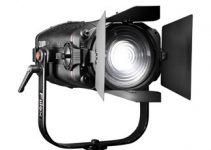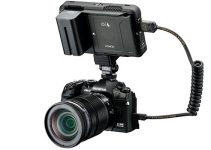With every new release Resolve is getting the more and more mature as a full editing suite. The last version that Blackmagic Design dropped at the first day of NAB sports a lot of new features and upgrades. The most talked one is the object removing, but it’s not the only one, there are a lot of small upgrades and refinements under the hood.
The YouTube channel Learn Davinci Resolve has a few nice tutorials or tip and tricks videos, now including also the new Resolve 16 Beta 1. Here is their pick on time-remapping in Resolve, or the SpeedWarp, an improved feature of optical flow that uses a neural engine to enhance the quality of time-remapped videos.
So, before Resolve 16 we had two options to slow down footage. The first, and less useful, was to simply slow down footage, so if you had a 24fps shot in 24fps timeline you would get a terrible 12fps video, everything would feel laggy and choppy. Safe to say, it was not even an option. The second choice was Optical Flow.
In a nutshell, Optical Flow tries to interpolate the frames to fill the void of 12 frames in each second of footage, and sometimes the result could be pretty good, but some other times, or it would be safer to say, most of the times, it would give a sense of smooth movement, but at the cost of creating weird artifacts and ghostly remnants of the moving objects. As you can see in the picture it seems like some extreme level motion blur is leaving a trace behind the biker.
Now SpeedWarp creates a third option. Actually, it’s a parameter you can configure inside Optical Flow, and what it does is using the new neural engine that Blackmagic has integrated inside the suite to try and fill the 12 missing frames we were talking before. Right off the bat, the results are amazing.
The smoothness increases drastically, and the overall feeling is of a slow-motion that comes from a high frame rate source. A trained eye will notice the small imperfections that are born in proximity of fast moving objects, but that is a more than acceptable level of error. For example, in the following frame the helmet of the kid merges with the fast moving van in the background.
It must not be forgotten that this very useful feature is still in its early days. Everything is bound to get better thanks to software updates, after all this is the Beta version of the software if you live in time paced workplaces.
Surely, soon will be easy to overcome it’s most prominent defect, and that would be that the neural engine takes time to process the video, a lot of raw power is required, hence a good workstation. So keep in mind if you need to warp time speed, you’ll need some extra time to do it.
Finally, one consideration. This feature is available only inside Resolve Studio, the full paid license that you can get buying it or otherwise in a bundle with any Blackmagic Design Camera.
Will this feature make it necessary to upgrade to the Studio version? Maybe not in the next imminent months, but added to the ability to have the powerful Noise Reduction in Premiere, to use multiple GPUs, to scale projects over UHD, well, all this summed up means that Resolve at the moment is a pretty good deal for everything it has to offer for the price.
[source: Learn Davinci Resolve]
Disclaimer: As an Amazon Associate partner and participant in B&H and Adorama Affiliate programmes, we earn a small comission from each purchase made through the affiliate links listed above at no additional cost to you.




